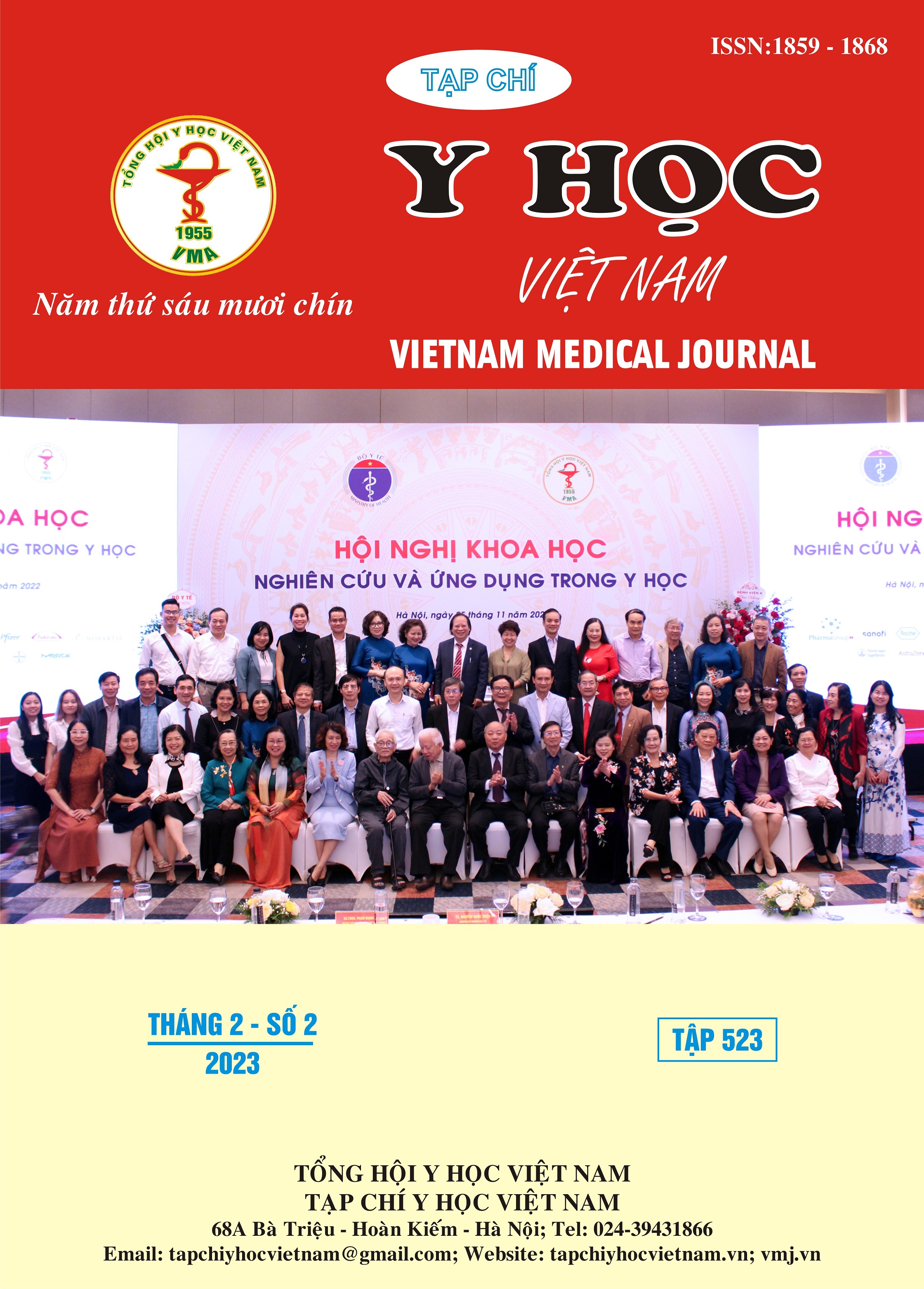DESCRIBE SOME COMPLICATIONS AFTER HIP ARTHROPLASTY
Main Article Content
Abstract
Objective: Describe the characteristics of some complications after hip replacement surgery. Methods: A cross-sectional descriptive retrospective study. Describe some characteristics in 287 patients diagnosed as one complication after hip replacement surgery from May 2016 to May 2021 at Bach Mai Hospital and VietDuc University Hospital. Results: Mean age 61.12 ± 13.27, the percentage of men accounted for the majority (62.37%). Patients with postoperative infection accounted for the highest rate at 41.81%, prosthesis dislocation at 26.48%, prosthesis loosening at 20.56%, and limb length difference postoperative at 11.15%. The median time of postoperative infection: is 14.38 months, mostly in the early and delayed stages. In which the most common clinical symptom is fever accounting for 58.33%, 51.67% of patients had inflammatory symptoms, 55.83% of patients had sinus tract symptoms. Average erythrocyte sedimentation 1-hour rate: 47.84±13.37mm. 78.33% of patients had positive microbiological culture results. Regarding prosthesis dislocation complications, average time of prosthesis dislocation: 3.8 months. In which the main cause of dislocation was due to daily activities (80.26%). Mean time of appearance of prosthesis loosening: 10.42 years. 83.05% of patients with prosthesis loosening have pain symptoms, 89.83% have limited range of motion. Mainly patients with loose stems accounted for 59.32%. The mean limb length difference in the complication group was 14.22 ± 5.84mm. Conclusion: Although hip replacement surgery has many advantages such as helping patients reduce pain and improve movement function of the hip joint, helping patients return to activities soon after surgery, etc., surgeons also necessary to pay attention to the possible complications and complications to explain carefully the patient as well as the patient's family before surgery.
Article Details
Keywords
complications after hip replacement surgery, infectious, dislocation, loosening, the limb length difference
References
2. Pfahler M, Schidlo C, Refior HJ. Evaluation of imaging in loosening of hip arthroplasty in 326 consecutive cases. Arch Orth Traum Surg. 1998; 117(4):205-207. doi:10.1007/s004020050230
3. Đỗ Vũ Anh. Đánh giá kết quả thay khớp háng toàn phần không xi măng sau 5 năm tại Bệnh viện Hữu Nghị Việt Đức. Luận văn Thạc sĩ y học. Đại học Y Hà Nội; 2016.
4. Phạm Trung Hiếu. Kết quả điều trị phẫu thuật nhiễm khuẩn sau thay khớp háng. Luận văn Thạc sĩ y học. Đại học Y Hà Nội; 2016.
5. Chitre AR, Fehily MJ, Bamford DJ. Total hip replacement after intra-articular injection of local anaesthetic and steroid. J Bone Joint Surg Br. 2007;89(2):166-168. doi:10.1302/0301-620X. 89B2. 18428
6. Ekpo TE, Berend KR, Morris MJ, Adams JB, Lombardi AV. Partial two-stage exchange for infected total hip arthroplasty: a preliminary report. Clin Orthop Relat Res. 2014;472(2):437-448. doi:10.1007/s11999-013-3168-3
7. Schmidt-Braekling T, Waldstein W, Akalin E, Benavente P, Frykberg B, Boettner F. Minimal invasive posterior total hip arthroplasty: are 6 weeks of hip precautions really necessary? Arch Orthop Trauma Surg. 2015;135(2):271-274. doi:10.1007/s00402-014-2146-x
8. Huten D. Luxations et subluxations des prothèses totales de hanche. Conférences d’enseignement de la Sofcot. 2012;55:19-46. doi:10.1016/B978-2-294-73416-8.00008-7
9. Beard DJ, Palan J, Andrew JG, Nolan J, Murray DW. Incidence and effect of leg length discrepancy following total hip arthroplasty. Physiotherapy. 2008;94(2):91-96. doi:10.1016/ j.physio.2008.01.005


